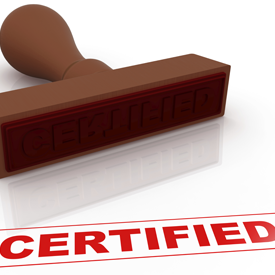For ACM’s Clients – Notice on FREE e-Learning on Good Agricultural Practices (GAP) Feb-June 2017
1.Objectives
The course is organized to assist agricultural producers, extension workers, and other technical personnel to understand, adopt, and maintain GAP approaches, principles, and systems to increase farm productivity, establish safe, sustainable production systems, and enhance access to markets with GAP requirements. The specific objectives are to:
a. Enable participants to understand the key concepts as well as the basic principles, tools, and techniques for promoting and adopting GAP;
b. Provide opportunities for SME farm production units to understand and adopt GAP in their production processes independently; and
c. Promote direct linkages between small and rural farmers and the market as the adoption of GAP increases farm productivity and assures safe, sustamable production.
2. Background
GAP refers to the approaches, principles, and standards applied to on-farm production to ensure the safety of food and nonfood agricultural products. These were established to encourage the production of high-quality, safe agricultural and food products produced in an environmentally and socially acceptable ways to meet retailers’ and consumers’ requirements. The GAP standard addresses two distinct issues: ensuring food safety during on-farming processes to build consumer confidence in products; and enhancing environmental sustainability for continued productive farm operations. The development and adoption of GAP have become more important in light of increasing regional and international trade in agricultural and food products and growing consciousness of consumers of the quality and safety of the food products they buy.
Agricultural producers, particularly small farmers, need to have their farms certified as GAP compliant to enhance the acceptability of their products. Several countries have developed their own GAP standards and certification systems. However, the lack of harmonization between national GAP schemes among countries and scarcity of affordable certification systems have often led to increased confusion and higher certification costs for farmers and exporters. Those with contractual relations with several retailers also complain about multiple audits against different criteria set by different groups of retailers every year.
An understanding of the approaches, principles, and standards of GAP and benchmarking of national GAP schemes against globally recognized guidelines like the GLOBALGAP standard is essential so that stakeholders in various member countries can properly orient and guide small farmers in meeting established GAP standards.
3.Scope and Methodology
Scope
The course will cover the following modules:
Module 1: Introduction to GAP
The GAP agenda, GAP as a management tool, consumer/customer demand as a driver of GAP promotion, constraints of small and rural producers/farmers in implementing GAP, examples of national GAP schemes, and ASEANGAP.
Module 2: Development of GAP in Conventional Horticultural Production Practices
Background and development of GAP, changing landscape of consumers and producers in food production in the Asian context, concepts and guiding principles of GAP, GAP compliance and conformity, GLOBALGAP certification, and the harmonized global GAP system.
QUK 1 (for self-assessment based on questions from Modules 1 and 2)
Module 3: Farm Management
Site history and site management, internal inspection and internal audit, record keeping, monitoring and farm management tools, traceability systems, recall and withdrawal procedures, and dealing with complaints.
Module 4: Food Safety
International food safety standards, food safety hazards, GAP for workers’ health and safety, GAP safety aspects of farm sites and soil management, plant protection products, fertilizer application, and irrigation and fertigation.
Quiz 2 (for self-assessment based on questions from Modules 3 and 4)
Module 5: Environmental Conservation
Impact of farming on the environment, the GAP environment and resource conservation programs, integrated pest management, and integrated crop management.
Module 6: Workers’ Health, Safety, and Welfare
Workers’ safety, workers’ hygiene, and workers’ welfare.
Quiz 3 (for self-assessment based on questions from Modules 5 and 6)
Module 7: Quality Management Systems (QMS)
Developing a QMS for a cluster group, internal audit, training and technical advice, traceability, recall and withdrawal procedures, and complaint procedures.
Module 8: Implementation of GAP for Greater Access to Markets
Challenges and impediments in implementation of GAP, especially for small- and medium-sized farms in Asia and the Pacific; practical solutions to resolve them; and key success factors.
Quiz 4 (for self-assessment based on questions from Module 7 and 8)
Final Examination
Methodology
Self-leaming e-modules, additional study materials for participants, intermittent quizzes for self-assessment, and a final examination to qualify for the e-certificate.
4.Qualifications of Candidates
The target participants include government officers; agricultural extension workers; producers; academics; professional staff of regulatory bodies/certification bodies; consultants involved in training, auditing, and/or promotion of GAP; and other technical personnel with particular interest in the subject.
5. Eligibility for e-Certificate
A minimum score of 70% on the final examination is required to qualify for the e-certificate.
